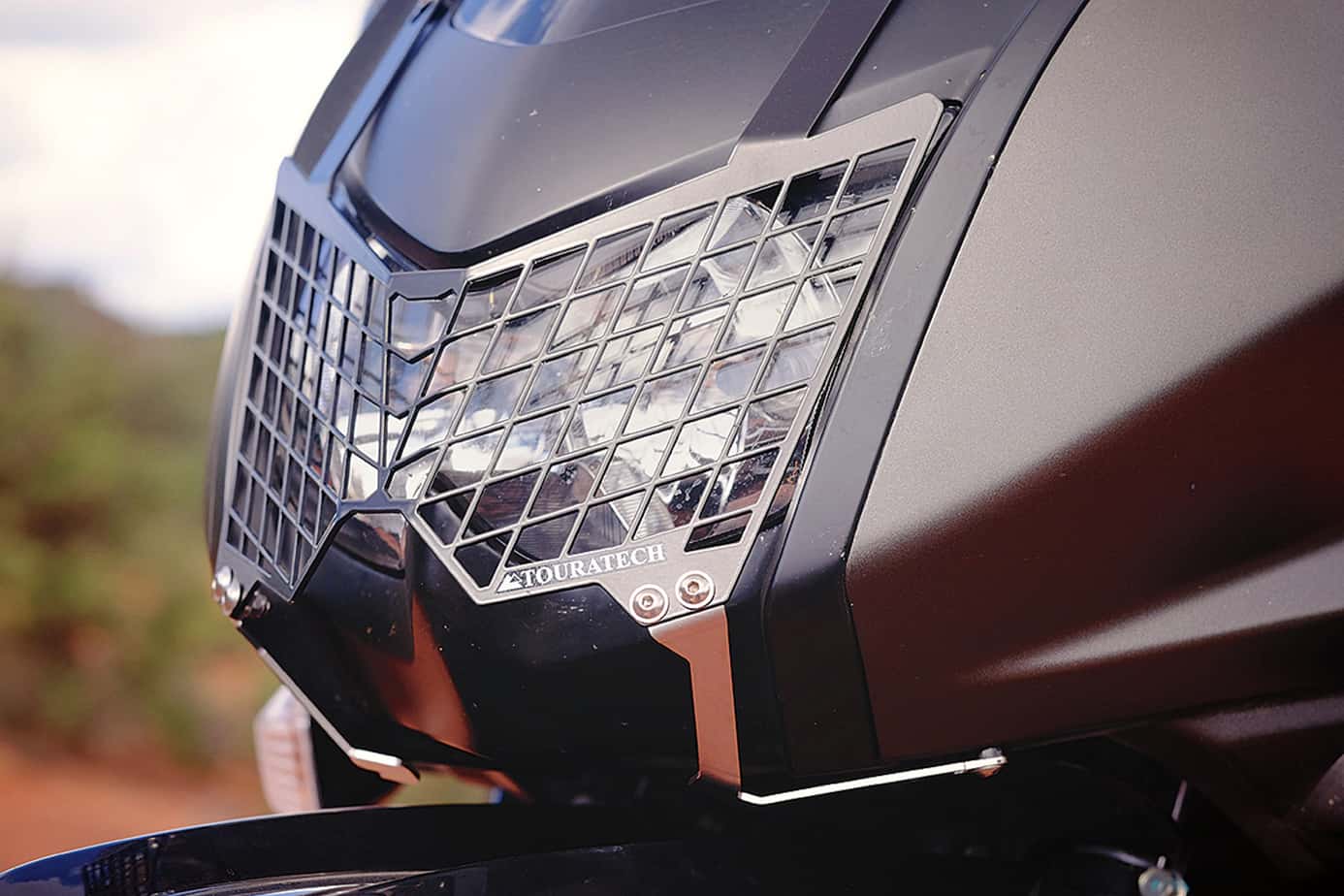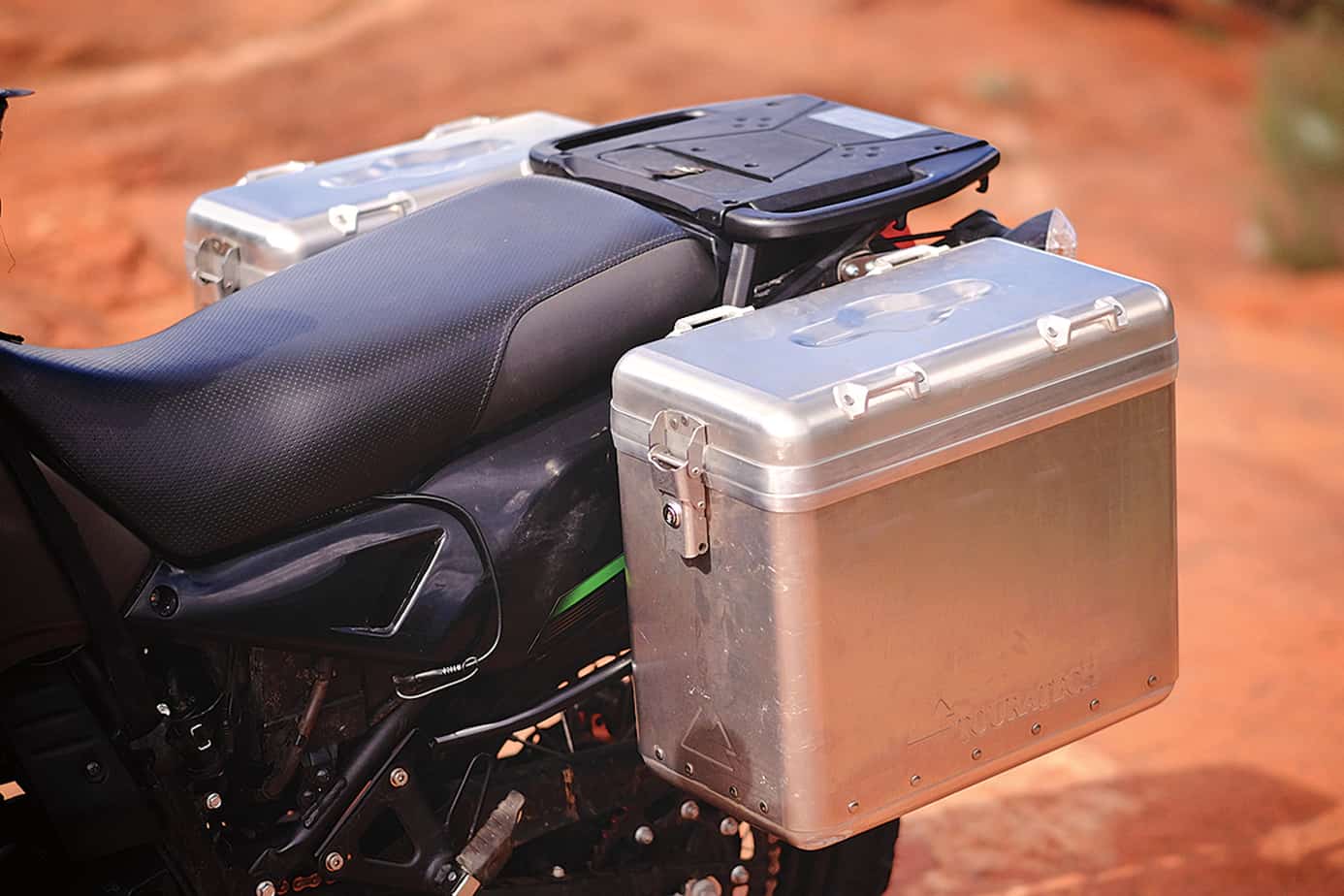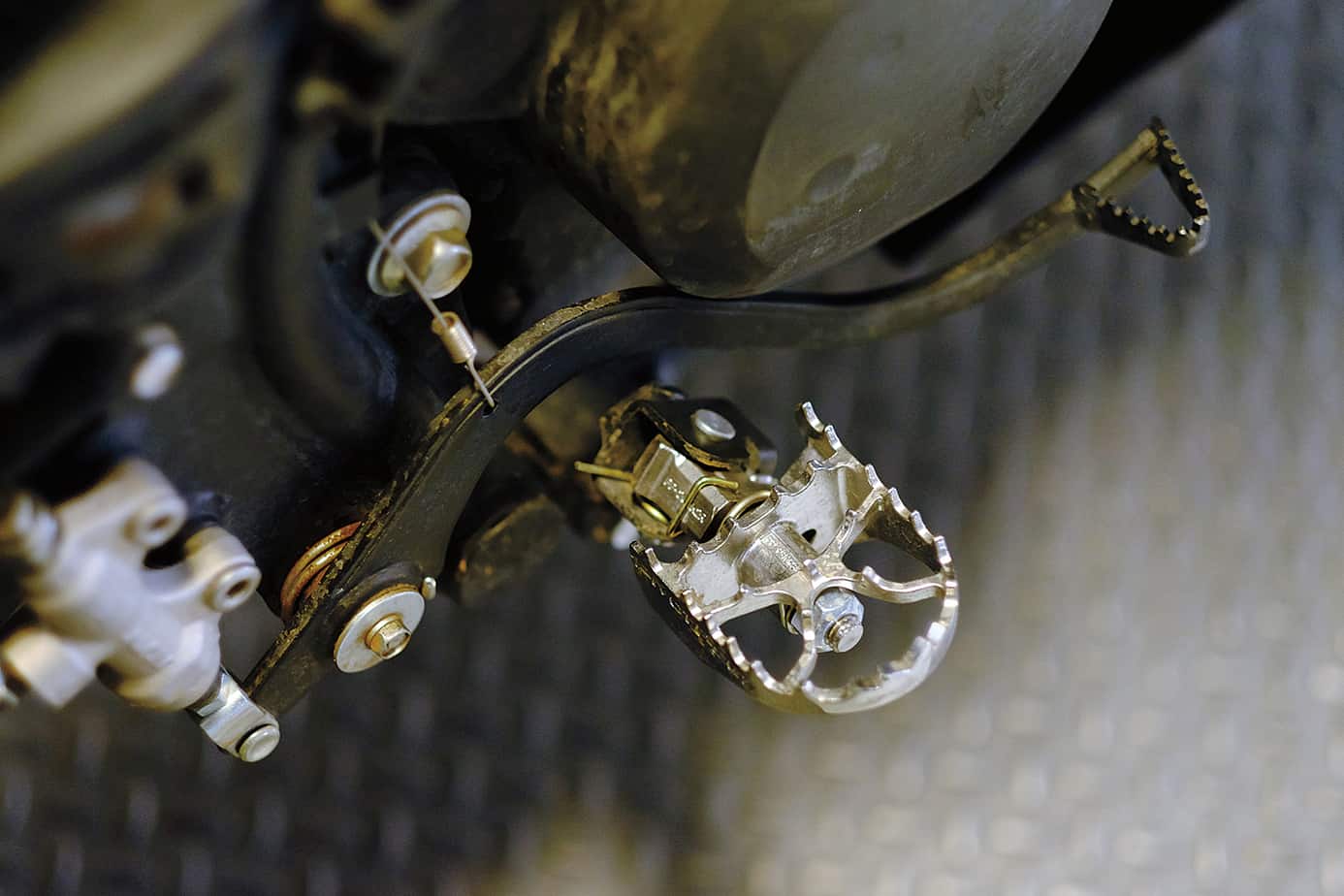Editor’s Note: This article was originally published in Overland Journal, Gear Guide 2016
Few dual-sport riders will question the KLR’s reputation as a true around-the-world motorcycle. With its generous 6-gallon tank and reliability, it is a common choice for global travelers. The 650 has also proven to be durable, particularly in 2014 or newer trim; the latest model features stiffer springs and valving tuned for heavier loads. The seat is wider and more comfortable, allowing the rider’s backside to match the extended fuel range. Our team was so impressed by the 2014 KLR that we added it to our long-term test fleet and made a few modifications to prepare it for journeys further afield.
FOR THE TRAIL
At Overland Journal, we believe true adventure motorcycles should be suitable for remote and harsh conditions. We have found that it is entirely possible to prepare a motorcycle that cruises comfortably on tarmac, yet still excels in sand, gravel, mud, and rocks. The KLR is already a competent dirt machine, but there are a few areas that benefit from adjustments for trail and road use.
Starting from the ground up, we addressed one of the most important considerations for any ADV motorcycle: proper tires. The stock Dunlops defy most criticisms for dry terrain, demonstrating surprising levels of grip in the twisties as well as being quiet on the road. However, once the surface gets wet or loose, the factory treads find their limitations. We ran the stock tires to the end of their service life, then looked for the best replacements, seeking a high-grip front tire with a long-lasting rear. One of the biggest challenges to long-distance motorcycle trips is the rate at which rear tires wear. We chose Heidenau K60 Scouts, which are more aggressive than the stock tires and should easily last 6,000 to 8,000 miles on this light, low-power Kawasaki. For the front, we selected the proven Dunlop D606, which is manageable on the highway, yet has tenacious lateral and braking grip on the dirt. We tested this combination in deep mud and rocks on one of our local test courses and it did not disappoint, clearing the medium quickly, with enhanced traction and control.
Further trail modifications included safeguarding the engine by replacing the stock plastic guard. There are many options for the KLR, but we have found that Touratech skid plates strike a good balance between weight, total coverage, and impact durability. The aluminum model looks great and installed easily, fitting tight against the chassis for maximum ground clearance. For additional protection we mounted a Touratech kickstand, headlight, and full coverage hand guards for brush and crash deflection.
The final changes for dirt performance addressed ergonomics and control. The only significant liability to the KLR on dirt is the factory rubber foot pegs. Understanding loads, the molded rubber contact points shift and rotate slightly, affecting peg weighting and maneuverability. If conditions are wet or muddy, the operator’s boots can easily slide off. During one particularly muddy ride I had to resort to sitting as my feet would simply not stay on the pegs. To address this, we installed aluminum, high-grip Pivot Pegz. These units are wide and supportive, with machined traction teeth to dig into the bottom of riding boots. Another nice feature is how the platform can rotate slightly while standing, adjusting fore and aft depending on slope or heel position. Since I stand for nearly all unimproved surfaces, the Pivot Pegz have been one of the most noticeable improvements to the Kawasaki for me. Our final ergonomic adjustment was to install Touratech 30-mm risers and rotate the bars forward slightly. Raising the hand position and angling the controls downward greatly improves comfort for taller riders.
FOR TRAVEL
The goal of this project was to prepare the KLR for remote, all-terrain travel. One decision any adventure motorcyclist must make is whether to select hard luggage or soft bags. For this build we wanted to reevaluate hard luggage and test the new Touratech Zega Mundo units in the process. These 38-liter (left) and 31-liter (right) aluminum panniers utilize a riveted and silicon-sealed construction instead of being welded. In addition, the product is also lighter and dimensionally smaller than typical side boxes, with an austere, clean look. The rack-mounting system installed easily and the boxes connect with four composite tabs and internal tension knobs. Low profile anchor loops are mounted to the lids and permit lashing of small accessory bags. My biggest complaint, and one I attribute to most hard cases, is their width, which can become an issue on tight trails, including the hazard of the box trapping the boot when the inevitable foot dab occurs. Crafted in Germany, Touratech cases are slightly more expensive, but are dust and waterproof and assembled from corrosion-resistant materials.


We also included a handlebar mount for the Garmin Montana GPS. Unfortunately, navigation units have actually degraded over time, but the Montana is one of the few remaining choices for an adventure motorcycle. Touratech makes a quality cradle that securely holds and locks the device to the KLR. We permanently wired the bracket for 12-volt power and key-matched the tumbler to the panniers. While working on wiring, it was convenient to install a cigarette lighter receptacle for operating additional accessories or charging phones in the tank bag.
At the rear of the seat, we installed an Anderson connector for battery maintenance or heated riding gear. For cruising, we mounted an Atlas throttle lock, which tightens around the accelerator sleeve to hold a constant engine speed. This unit does not supplant electronic cruise control, but it does allow the rider to shake out a hand or raise the idle during warm-up or charging duties.


The final touring modification was the addition of our trusty Enduristan Sandstorm tank bag, just big enough to hold a mirrorless camera system with a few lenses. These tank bags are the best we have found for water resistance and protection of contents.
Anyone who knows adventure bikes respects the KLR, and for good reason. This reliable motorcycle has become a top choice for everything from tackling local back roads to completing a lap around the globe. In stock form the bike requires few modifications, and the enhancements installed for this project have truly improved the travel and trail capabilities of the 650. Highway miles are more comfortable and dirt performance has increased significantly. The accessories are all high-quality units from reputable manufacturers, a fitting compliment to such a popular model. While we may install a few more minor additions, the Kawasaki is ready for a lazy meander south or a serious road trip north, depending on which of our staff grabs the keys first.






